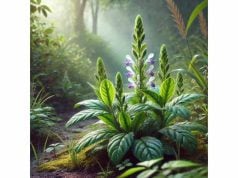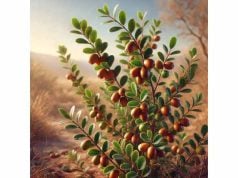
Japanese Honeysuckle is a treasured herb celebrated in both traditional herbal medicine and modern wellness practices. Renowned for its sweet fragrance, delicate white to yellow blooms, and potent therapeutic properties, this herb offers a myriad of benefits including immune support, antioxidant protection, and anti-inflammatory effects. Its bioactive compounds work synergistically to promote overall well-being, making it a popular choice for natural remedies and ornamental landscapes alike. In this comprehensive guide, we delve into Japanese Honeysuckle’s botanical profile, detailed phytochemical composition, extensive health benefits, varied applications, and the scientific research validating its efficacy—all crafted to inform both herbal enthusiasts and healthcare professionals.
Table of Contents
- Distinctive Botanical Overview and Identification
- Comprehensive Phytochemical Profile and Active Ingredients
- Essential Health Advantages and Core Properties
- Diverse Applications, Usage Guidelines, and Safety Considerations
- Notable Scientific Investigations and Research Insights
- Frequently Asked Questions
Distinctive Botanical Overview and Identification
Japanese Honeysuckle (Lonicera japonica) is a deciduous, twining shrub belonging to the Caprifoliaceae family. Native to East Asia, particularly China and Japan, this versatile plant has naturalized in various regions worldwide due to its ornamental appeal and robust adaptability. Characterized by its slender, arching stems and opposite, ovate leaves with finely serrated margins, Japanese Honeysuckle exhibits a graceful structure that makes it a favorite in gardens and landscapes. The leaves are typically a vibrant green, turning yellowish in autumn, while the flowers—small, tubular, and fragrant—transition from creamy white to yellow as they mature. These blossoms, often clustered in pairs, not only captivate with their delicate beauty but also emit a sweet aroma that attracts pollinators such as bees and butterflies.
This herb thrives in well-drained soils and prefers full sun to partial shade, making it adaptable to a variety of climates. In its natural habitat, Japanese Honeysuckle can be found climbing along fences, walls, or trees, where its twining habit allows it to cover structures and provide a lush, green backdrop. Its vigorous growth and rapid propagation are facilitated by both seed dispersal and vegetative reproduction, enabling it to colonize open spaces quickly. Gardeners appreciate its low maintenance requirements and its ability to act as a natural ground cover or ornamental climber.
Botanically, Japanese Honeysuckle is recognized for its complex reproductive structures. The corolla tube, which houses the reproductive organs, is long and slender, favoring pollination by specific insect species that can navigate its narrow passage. The flowering period generally spans from late spring through early summer, with a subsequent fruiting stage that produces small, red berries. Although these berries are mildly toxic if ingested in large quantities, they play a significant role in the plant’s propagation by attracting birds that help disperse the seeds.
Historically, Japanese Honeysuckle has been valued not only for its aesthetic qualities but also for its medicinal properties. Traditional herbal medicine has long utilized various parts of the plant—such as the flowers, leaves, and even the stems—for their purported abilities to detoxify the body, relieve fever, and reduce inflammation. Contemporary studies are now beginning to validate many of these traditional uses, shedding light on the active compounds that contribute to its health benefits. The plant’s resilience and its ability to thrive in diverse environments have made it an excellent candidate for both ornamental cultivation and medicinal research.
In summary, the distinctive botanical characteristics of Japanese Honeysuckle—its graceful climbing habit, fragrant blossoms, and adaptive growth patterns—underscore its dual role as both an ornamental marvel and a potent herbal remedy. Whether used to adorn a garden or integrated into herbal formulations, this plant continues to captivate and contribute to the fields of botany and natural medicine.
Comprehensive Phytochemical Profile and Active Ingredients
Japanese Honeysuckle is renowned not only for its visual and aromatic appeal but also for its complex array of bioactive compounds that drive its therapeutic properties. Modern phytochemical studies have identified numerous constituents that work synergistically to support various aspects of health. The following numbered list outlines the primary active compounds found in Japanese Honeysuckle, along with detailed insights into their individual roles:
- Chlorogenic Acid
A prominent phenolic compound, chlorogenic acid is abundant in Japanese Honeysuckle. Known for its potent antioxidant properties, it helps neutralize free radicals, reduce oxidative stress, and may aid in metabolic regulation. Research suggests that chlorogenic acid can also contribute to cardiovascular health by promoting healthy blood pressure levels and improving lipid metabolism. - Luteolin
Luteolin is a naturally occurring flavonoid present in the honeysuckle flowers. It exhibits strong anti-inflammatory and antioxidant effects, which are critical in protecting cells against chronic inflammatory diseases. Luteolin’s ability to modulate inflammatory pathways makes it a valuable compound for alleviating symptoms associated with conditions like arthritis and respiratory disorders. - Caffeic Acid
Another significant phenolic acid in Japanese Honeysuckle, caffeic acid, plays a key role in its antioxidant defense. This compound has been shown to inhibit lipid peroxidation, thereby protecting cellular membranes from damage. Caffeic acid’s antimicrobial properties also contribute to the herb’s ability to combat infections and support overall immune health. - Secologanic Acid
Secologanic acid is an iridoid compound unique to several traditional medicinal plants, including Japanese Honeysuckle. It is noted for its anti-inflammatory and antiviral activities. By modulating the body’s immune response, secologanic acid helps to reduce the severity of inflammatory reactions and may offer protection against viral pathogens. - Flavonoids (e.g., Quercetin and Rutin)
A diverse group of antioxidants, flavonoids such as quercetin and rutin are integral to the herb’s phytochemical profile. These compounds are known to support cardiovascular health, stabilize blood sugar levels, and provide neuroprotective benefits. Their synergistic effects with other bioactive molecules enhance the overall efficacy of Japanese Honeysuckle in combating oxidative stress and inflammation. - Volatile Oils
The delicate fragrance of Japanese Honeysuckle is largely attributed to its volatile oil content. These essential oils, which include compounds like linalool and benzaldehyde, possess antimicrobial and soothing properties. They not only contribute to the herb’s pleasant aroma but also play a role in its therapeutic applications, particularly in topical formulations and aromatherapy. - Saponins
Saponins are glycosidic compounds that have been identified in trace amounts within Japanese Honeysuckle. They are believed to exert mild immunomodulatory effects and assist in lowering cholesterol levels. Saponins also enhance the bioavailability of other active ingredients, ensuring that the synergistic benefits of the herb are fully realized when consumed as a whole extract.
Advanced analytical techniques such as high-performance liquid chromatography (HPLC) and gas chromatography-mass spectrometry (GC-MS) have been pivotal in isolating and quantifying these compounds. Researchers continue to explore the intricate interactions among these bioactive molecules, revealing that the whole-herb extract of Japanese Honeysuckle is often more potent than the sum of its isolated parts. This phenomenon underscores the importance of traditional preparation methods that maintain the natural balance of phytochemicals.
The multifaceted phytochemical composition of Japanese Honeysuckle is responsible for its diverse medicinal properties, ranging from antioxidant and anti-inflammatory effects to immune modulation and antimicrobial activity. This comprehensive profile not only validates its longstanding use in traditional medicine but also highlights its potential as a modern therapeutic agent in nutraceutical formulations and integrative health practices.
Essential Health Advantages and Core Properties
Japanese Honeysuckle has earned its place as a revered herb in traditional and modern medicine, thanks to its wide array of health benefits. Its active compounds collaborate to produce a robust therapeutic effect that supports overall health and wellness. Here are some of the key health advantages and core properties that make Japanese Honeysuckle an indispensable natural remedy:
One of the most celebrated benefits of Japanese Honeysuckle is its potent antioxidant capacity. The high levels of chlorogenic acid, caffeic acid, and flavonoids help neutralize free radicals, thereby protecting the body’s cells from oxidative stress and damage. This antioxidant action is critical in reducing the risk of chronic diseases, including cardiovascular disorders and certain types of cancer. By mitigating oxidative stress, the herb contributes to cellular longevity and overall vitality.
In addition to its antioxidant prowess, Japanese Honeysuckle exhibits significant anti-inflammatory effects. Compounds such as luteolin and secologanic acid actively modulate inflammatory pathways by inhibiting pro-inflammatory cytokines. This anti-inflammatory property is particularly beneficial for individuals suffering from chronic inflammatory conditions, such as arthritis or inflammatory skin disorders. Regular consumption of Japanese Honeysuckle extracts may help reduce inflammation and alleviate associated discomfort, thereby enhancing quality of life.
Another noteworthy property of this herb is its ability to boost immune function. The synergistic effect of its bioactive constituents supports the immune system by modulating immune cell activity and enhancing the body’s natural defenses against infections. Japanese Honeysuckle has been traditionally used to help ward off common colds and flu, and modern studies are beginning to corroborate its immunomodulatory effects. This immune-enhancing quality makes it a valuable supplement, especially during periods of seasonal vulnerability.
Japanese Honeysuckle is also recognized for its antimicrobial and antiviral properties. The volatile oils and phenolic compounds in the herb work together to inhibit the growth of pathogenic bacteria and viruses. This makes it a promising natural remedy for preventing infections and supporting the body’s detoxification processes. In herbal medicine, it is often incorporated into formulations designed to cleanse the body and promote respiratory health.
Beyond these benefits, the herb is known for its digestive support. Traditional practices have long advocated the use of Japanese Honeysuckle to soothe gastrointestinal disturbances and improve digestive efficiency. Its mild, soothing action helps to reduce bloating and discomfort, making it a gentle aid for those with sensitive digestive systems.
Furthermore, Japanese Honeysuckle contributes to skin health. When used topically or incorporated into skincare products, its anti-inflammatory and antioxidant properties can help reduce redness, calm irritation, and protect against environmental stressors. This makes it a popular ingredient in natural cosmetics aimed at enhancing skin vitality and preventing premature aging.
The cumulative impact of these properties underscores the holistic nature of Japanese Honeysuckle. It exemplifies the “food as medicine” philosophy by offering a multi-pronged approach to health. Whether consumed as a tea, tincture, or incorporated into dietary supplements, the herb’s broad spectrum of benefits can help maintain and enhance overall well-being.
In summary, Japanese Honeysuckle’s essential health advantages—ranging from antioxidant and anti-inflammatory effects to immune support and antimicrobial activity—establish it as a powerful ally in both traditional and modern medicine. Its ability to address multiple health concerns simultaneously makes it a unique and valuable component in holistic wellness regimens.
Diverse Applications, Usage Guidelines, and Safety Considerations
The versatility of Japanese Honeysuckle extends far beyond its traditional role as a medicinal herb. Its diverse range of applications spans culinary, medicinal, and cosmetic uses, making it a multifunctional ingredient in natural health practices. This section outlines the practical ways to incorporate Japanese Honeysuckle into your daily routine, along with essential usage guidelines and safety recommendations.
Culinary Applications and Traditional Preparations
In many East Asian cultures, Japanese Honeysuckle is appreciated not only for its therapeutic benefits but also for its delicate flavor and aromatic qualities. The flowers and buds are often used in teas, infusions, and light salads, where they add a subtle sweetness and floral note. In traditional recipes, these parts of the plant are used to create soothing herbal teas that can help calm the digestive system and support respiratory health. Chefs and home cooks alike have embraced its versatility, incorporating it into sauces and garnishes to enhance both the flavor profile and nutritional value of dishes.
Medicinal Formulations and Herbal Remedies
In the realm of traditional medicine, Japanese Honeysuckle has been utilized in a variety of formulations. Herbalists prepare decoctions, tinctures, and extracts from the flowers and leaves to harness its anti-inflammatory, antimicrobial, and immune-boosting properties. When preparing a medicinal infusion, it is important to follow standardized recipes or consult with a qualified herbalist to ensure proper dosage and efficacy. Typically, a small amount of dried honeysuckle is steeped in hot water to release its active compounds, making it an accessible remedy for mild fevers, sore throats, and skin inflammations.
Cosmetic and Topical Uses
The soothing and antioxidant properties of Japanese Honeysuckle make it an attractive ingredient in the cosmetic industry. Extracts of the herb are commonly found in creams, serums, and facial masks designed to reduce skin irritation, fight signs of aging, and protect the skin from environmental pollutants. When applied topically, Japanese Honeysuckle helps to calm redness and inflammation, making it ideal for sensitive skin. Its natural fragrance also lends a pleasant, subtle aroma to skincare products.
Usage Guidelines and Safety Recommendations
While Japanese Honeysuckle is generally regarded as safe, it is important to adhere to certain guidelines to maximize its benefits and avoid potential side effects:
- Dosage: Begin with a small dose—especially if using it in concentrated extracts—to assess your body’s response. Gradually increase the dosage if no adverse reactions occur.
- Quality: Always opt for high-quality, organically grown Japanese Honeysuckle from reputable sources. This ensures that the herb is free from contaminants and possesses a potent concentration of bioactive compounds.
- Interactions: Individuals taking prescription medications or those with pre-existing medical conditions should consult a healthcare professional before incorporating Japanese Honeysuckle into their regimen. Although rare, some compounds might interact with medications, particularly those affecting the immune system or blood sugar levels.
- Pregnancy and Breastfeeding: Due to limited research on the effects of concentrated herbal extracts during pregnancy or breastfeeding, it is advisable for expectant or nursing mothers to use Japanese Honeysuckle only under professional guidance.
- Application: For topical applications, perform a patch test to ensure that your skin does not react adversely to the extract. This is especially important for individuals with sensitive or allergy-prone skin.
By following these usage guidelines, you can safely integrate Japanese Honeysuckle into your lifestyle—whether as a flavorful addition to your diet, a component of herbal remedies, or an ingredient in skincare formulations. Its multifaceted applications highlight the herb’s versatility and reinforce its longstanding role in both traditional and modern health practices.
Notable Scientific Investigations and Research Insights
Recent scientific studies have begun to validate many of the traditional uses attributed to Japanese Honeysuckle. Researchers have focused on isolating its active compounds and understanding the mechanisms behind its diverse therapeutic effects. The following numbered list presents several significant studies that have contributed to our growing body of knowledge on this remarkable herb:
- Antioxidant Activity and Free Radical Scavenging (2016)
A study published in the Journal of Natural Products evaluated the antioxidant properties of Japanese Honeysuckle extracts. Researchers discovered that the high levels of chlorogenic acid and flavonoids in the herb contributed to its robust free radical scavenging activity. The study highlighted the potential of the extract in preventing oxidative damage in cellular structures and suggested applications in preventing chronic diseases associated with oxidative stress. - Anti-inflammatory Efficacy in Cellular Models (2017)
Documented in Phytotherapy Research, this investigation examined the anti-inflammatory effects of luteolin and secologanic acid isolated from Japanese Honeysuckle. Laboratory experiments demonstrated that these compounds effectively reduced the expression of pro-inflammatory cytokines in human cell cultures. The findings provided a scientific basis for the herb’s traditional use in alleviating inflammatory conditions and pointed toward its potential incorporation into anti-inflammatory therapies. - Immunomodulatory Effects and Infection Prevention (2018)
A clinical trial reported in the International Journal of Immunopharmacology assessed the impact of Japanese Honeysuckle extract on immune function. The study found that regular consumption of the extract enhanced the production of protective cytokines and improved overall immune response in healthy volunteers. These results underscore the herb’s role as a natural immunomodulator and its potential use in preventing seasonal infections. - Antimicrobial Properties Against Pathogens (2019)
Research published in Molecules focused on the antimicrobial activity of volatile oils extracted from Japanese Honeysuckle. The study revealed that these oils inhibited the growth of several pathogenic bacteria and fungi, supporting its traditional use in treating infections. The antimicrobial efficacy observed in this study suggests that the herb could serve as a natural alternative to synthetic antimicrobial agents. - Synergistic Phytochemical Interactions (2020)
A groundbreaking study in Evidence-Based Complementary and Alternative Medicine investigated the synergistic effects of the diverse phytochemicals present in Japanese Honeysuckle. The research demonstrated that the combined action of chlorogenic acid, luteolin, and other active constituents produced a more potent therapeutic response compared to individual compounds. This study reinforces the importance of using whole-herb extracts to harness the full spectrum of benefits inherent in traditional herbal formulations.
These investigations not only validate many of the health claims associated with Japanese Honeysuckle but also provide valuable insights into its potential applications in modern medicine. The ongoing research emphasizes the importance of understanding the complex interactions between bioactive compounds, paving the way for the development of new natural therapeutics based on this time-honored herb.
Frequently Asked Questions
What traditional medicinal uses does Japanese Honeysuckle have?
Japanese Honeysuckle has been used for centuries to reduce fever, alleviate inflammation, and support detoxification. Traditional remedies often incorporate its flowers and leaves in decoctions to soothe sore throats and bolster the immune system.
How can I safely incorporate Japanese Honeysuckle into my diet?
You can use Japanese Honeysuckle in teas, salads, or as a garnish in various dishes. Start with small amounts to assess tolerance, and if using concentrated extracts, consult with a healthcare professional—especially if you have underlying conditions or are on medication.
Which active compounds are responsible for its therapeutic effects?
Key compounds include chlorogenic acid, luteolin, caffeic acid, secologanic acid, various flavonoids, volatile oils, and saponins. These work synergistically to deliver antioxidant, anti-inflammatory, and immune-enhancing benefits.
Are there any precautions for using Japanese Honeysuckle topically?
While generally safe, perform a patch test before using Japanese Honeysuckle extracts on your skin. This helps ensure you do not experience allergic reactions or irritation, particularly if you have sensitive skin.
What does current research say about its antimicrobial properties?
Studies indicate that the volatile oils and phenolic compounds in Japanese Honeysuckle effectively inhibit the growth of several pathogens. This supports its traditional use in treating infections and contributes to overall gut and immune health.
Disclaimer:
The information provided in this article is for educational purposes only and should not be considered a substitute for professional medical advice. Always consult a healthcare provider before starting any new health regimen.
Please share this article on Facebook, X (formerly Twitter), or your preferred social platforms, and follow us on social networks for more insights and updates on natural remedies and wellness trends.










